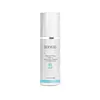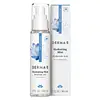What's inside
What's inside
 Key Ingredients
Key Ingredients

 Benefits
Benefits

 Concerns
Concerns

 Ingredients Side-by-side
Ingredients Side-by-side

Water
Skin ConditioningPolysorbate 20
EmulsifyingGlycerin
HumectantSodium Methyl Cocoyl Taurate
CleansingCoco-Betaine
CleansingSodium PCA
HumectantCitrus Tangerina Peel Oil
MaskingGlycolic Acid
BufferingPolysorbate 80
EmulsifyingPhospholipids
Skin ConditioningSantalum Album Extract
CleansingPhellodendron Amurense Bark Extract
Skin ConditioningSodium Hyaluronate
HumectantHordeum Vulgare Extract
EmollientPEG-7 Glyceryl Cocoate
EmulsifyingAlcohol
AntimicrobialEthylhexylglycerin
Skin ConditioningMethylpropanediol
SolventCaprylhydroxamic Acid
Water, Polysorbate 20, Glycerin, Sodium Methyl Cocoyl Taurate, Coco-Betaine, Sodium PCA, Citrus Tangerina Peel Oil, Glycolic Acid, Polysorbate 80, Phospholipids, Santalum Album Extract, Phellodendron Amurense Bark Extract, Sodium Hyaluronate, Hordeum Vulgare Extract, PEG-7 Glyceryl Cocoate, Alcohol, Ethylhexylglycerin, Methylpropanediol, Caprylhydroxamic Acid
Water
Skin ConditioningGlycerin
HumectantRosa Damascena Flower Water
MaskingCocos Nucifera Water
MaskingPolysorbate 20
EmulsifyingHamamelis Virginiana Extract
AntiseborrhoeicSodium Hyaluronate
HumectantSodium Ascorbyl Phosphate
AntioxidantPanthenol
Skin ConditioningCamellia Sinensis Leaf Extract
AntimicrobialAloe Barbadensis Extract
Skin ConditioningAllantoin
Skin ConditioningPotassium Sorbate
PreservativePhenoxyethanol
PreservativeEthylhexylglycerin
Skin ConditioningLeuconostoc/Radish Root Ferment Filtrate
AntimicrobialParfum
MaskingWater, Glycerin, Rosa Damascena Flower Water, Cocos Nucifera Water, Polysorbate 20, Hamamelis Virginiana Extract, Sodium Hyaluronate, Sodium Ascorbyl Phosphate, Panthenol, Camellia Sinensis Leaf Extract, Aloe Barbadensis Extract, Allantoin, Potassium Sorbate, Phenoxyethanol, Ethylhexylglycerin, Leuconostoc/Radish Root Ferment Filtrate, Parfum
Ingredients Explained
These ingredients are found in both products.
Ingredients higher up in an ingredient list are typically present in a larger amount.
Ethylhexylglycerin (we can't pronounce this either) is commonly used as a preservative and skin softener. It is derived from glyceryl.
You might see Ethylhexylglycerin often paired with other preservatives such as phenoxyethanol. Ethylhexylglycerin has been found to increase the effectiveness of these other preservatives.
Glycerin is already naturally found in your skin. It helps moisturize and protect your skin.
A study from 2016 found glycerin to be more effective as a humectant than AHAs and hyaluronic acid.
As a humectant, it helps the skin stay hydrated by pulling moisture to your skin. The low molecular weight of glycerin allows it to pull moisture into the deeper layers of your skin.
Hydrated skin improves your skin barrier; Your skin barrier helps protect against irritants and bacteria.
Glycerin has also been found to have antimicrobial and antiviral properties. Due to these properties, glycerin is often used in wound and burn treatments.
In cosmetics, glycerin is usually derived from plants such as soybean or palm. However, it can also be sourced from animals, such as tallow or animal fat.
This ingredient is organic, colorless, odorless, and non-toxic.
Glycerin is the name for this ingredient in American English. British English uses Glycerol/Glycerine.
Learn more about GlycerinPolysorbate 20 is made by combining ethoxylation of sorbitan, ethylene oxide, and lauric acid. It is a mild cleansing agent, surfactant, and emulsifier.
As a surfactant, it helps collect dirt and oils for washing. Emulsifiers prevent oils and water from separating.
Polysorbate 20 also adds scent to a product. Since it is made using sorbitol, it has a sweet scent. Sorbitol can also be found in fruits such as apples and peaches.
The lauric acid used to create Polysorbate 20 is often derived from coconuts.
Polysorbate 20 may not be fungal acne safe.
Learn more about Polysorbate 20Sodium Hyaluronate is hyaluronic acid's salt form. It is commonly derived from the sodium salt of hyaluronic acid.
Like hyaluronic acid, it is great at holding water and acts as a humectant. This makes it a great skin hydrating ingredient.
Sodium Hyaluronate is naturally occurring in our bodies and is mostly found in eye fluid and joints.
These are some other common types of Hyaluronic Acid:
Learn more about Sodium HyaluronateWater. It's the most common cosmetic ingredient of all. You'll usually see it at the top of ingredient lists, meaning that it makes up the largest part of the product.
So why is it so popular? Water most often acts as a solvent - this means that it helps dissolve other ingredients into the formulation.
You'll also recognize water as that liquid we all need to stay alive. If you see this, drink a glass of water. Stay hydrated!
Learn more about Water